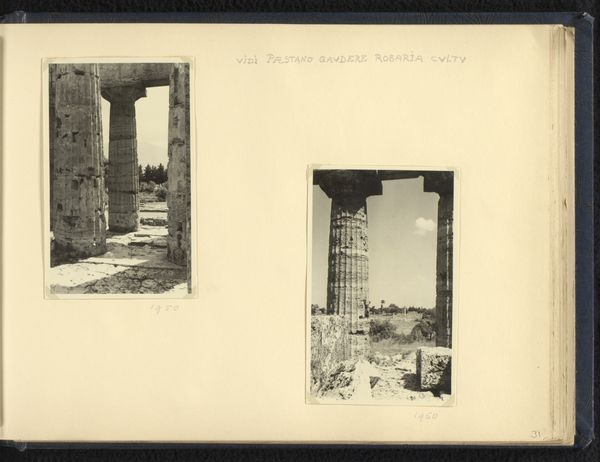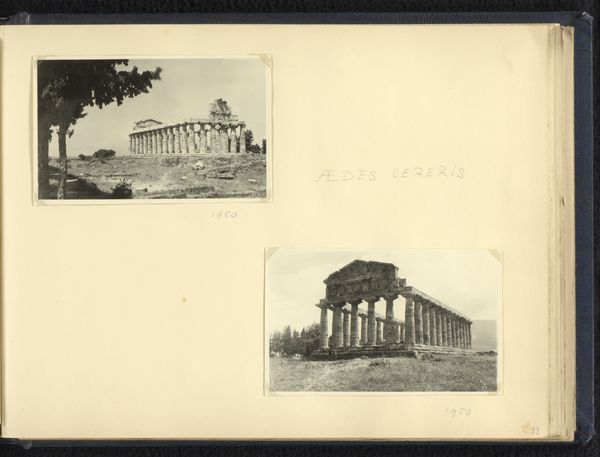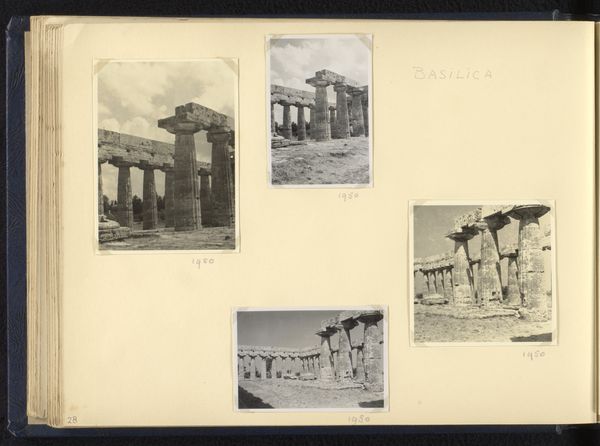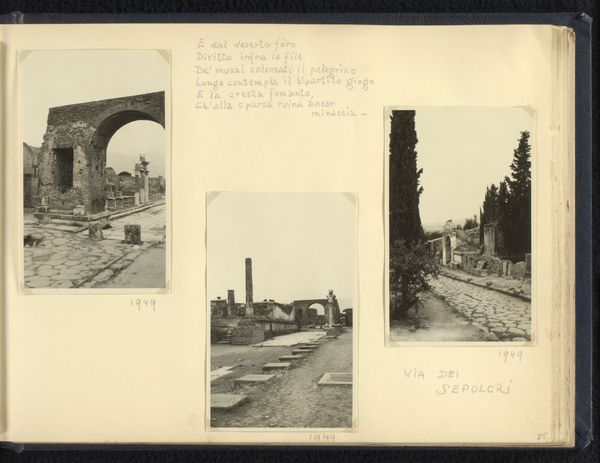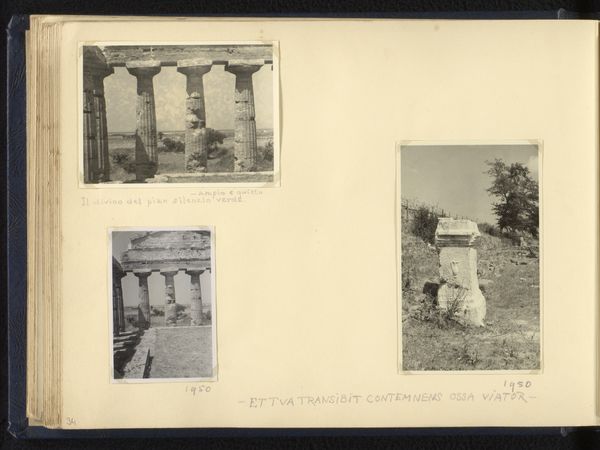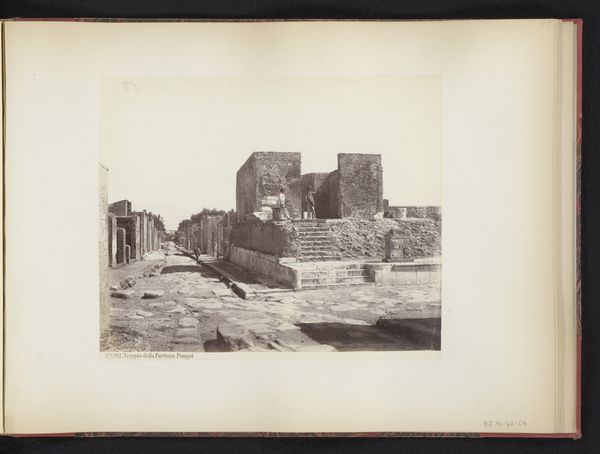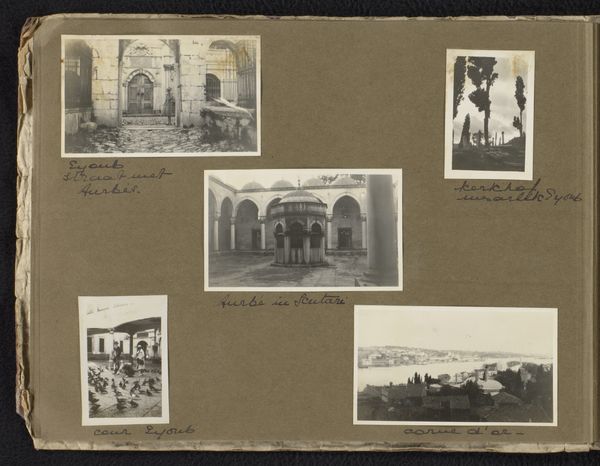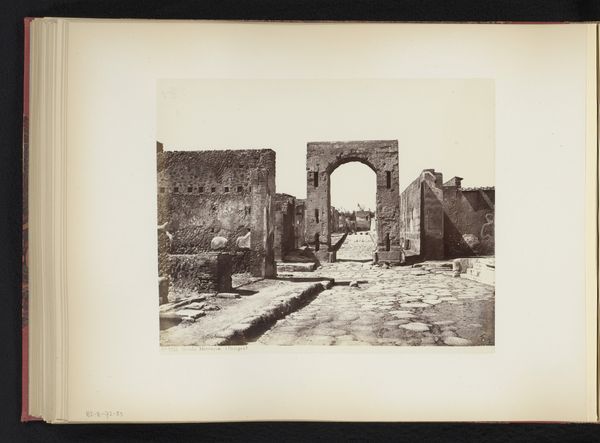
#
faded colour hue
#
aged paper
#
homemade paper
#
pale palette
#
reduced colour palette
#
muted colour palette
#
light coloured
#
personal sketchbook
#
unrealistic statue
#
historical font
Dimensions: height 232 mm, width 336 mm
Copyright: Rijks Museum: Open Domain
Editor: Here we have "Twee foto's van de tempel van Hera in Paestum" or "Two photos of the Temple of Hera in Paestum," created in 1949 by Norbert van den Berg. The faded images, displayed in what appears to be a personal sketchbook, really evoke a sense of history. What social and historical factors might have influenced the artist's choice to document this ancient site in this particular way? Curator: It's interesting that you pick up on that immediately. Consider the post-war period in which these photographs were taken. Europe was rebuilding, re-evaluating its identity. These images, documenting classical ruins, participate in a long tradition of Europeans looking to antiquity for inspiration, validation even. But the sketchbook format – almost like a travelogue – shifts the emphasis from grand, official narratives to a more personal encounter with the past. The very act of photographing these temples suggests a desire to connect with something enduring amid the chaos of the 20th century. Why document in 1949, why those texts in Latin? Editor: That makes a lot of sense. So, it’s not just about recording the architecture, but also about placing it within a larger cultural context and even the socio-political forces. Do you think the choice of black and white photography plays a role here too? Curator: Absolutely. Black and white can lend a sense of timelessness, even gravitas. It evokes earlier forms of documentation, connecting this personal record to a broader history of representing classical antiquity. It invites us to reflect on how the past is continually re-interpreted through the lens of the present. But this presentation does not suggest pure or scientific interest, rather a sensitive approach. Editor: That's fascinating. I hadn't considered the impact of the medium itself. Curator: Indeed, it’s about more than just the subject matter; it’s about understanding how those choices contribute to shaping our understanding of the past and art's relation to it. Editor: I've learned a lot about the different layers in viewing art and the artist. Thanks so much for your time!
Comments
No comments
Be the first to comment and join the conversation on the ultimate creative platform.
